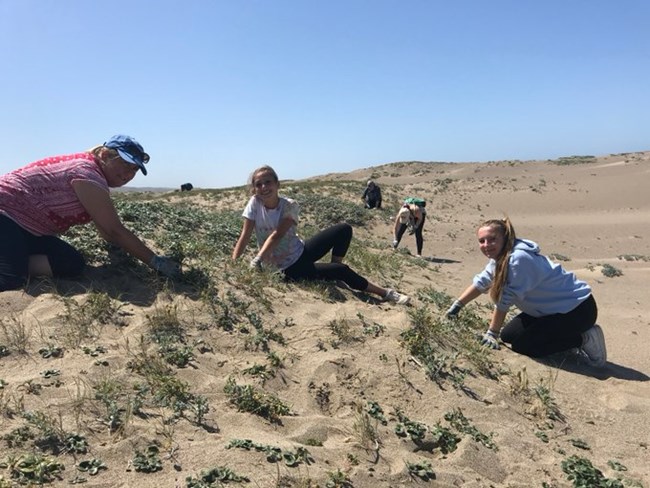Last updated: November 16, 2021
Article
Invasive plants in park a growing threat

By: Braden Cartwright
02/12/2020
In the dunes at Abbotts Lagoon, the Western snowy plover is nesting, the Tidestrom’s lupine is germinating, and the sand is flowing.
At most other beaches in the Point Reyes National Seashore, the dunes are steep, continuous ridges infested with iceplant and European beachgrass. These invasive plants stabilize the sand, eliminating wildlife habitat and crowding out native plants.
The lagoon, which has been the subject of a restoration project since 2011, shows the benefits of ridding an area of invasive plants. But the restored area is miniscule compared to the immense scale of invasive plants across the seashore. Streams, roadsides and ranches are also inundated with hundreds of different species of invasive plants, and the problem is growing.
According to a natural resource condition assessment of the seashore released last year by the National Park Service, invasive plans are being introduced at an unprecedented rate—replacing native species, changing ecosystems, altering soil chemistry and reducing agricultural productivity.
Each year, an average of 2.8 species are added to the park’s list of species targeted for removal, which now includes 167 different plants. This includes data only from along roads and trails, and the report acknowledges gaps in understanding in remote wilderness areas.
The assessment examined eight natural resources and scored them based on how much concern is warranted. Invasive plants were the only resource of significant concern. Amphibians, birds and rare plants are doing well, while forests, grasslands (threatened by non-native plants) and steelhead could be doing better. Not enough information was available to determine the condition of coastal dunes.
The 300-page report gives four stressors in the park that correlate with invasive plant abundance: pests and pathogens, climate change, an altered fire regime, and land use. “Point Reyes is an unusual unit in the National Park Service in that it incorporates livestock grazing and associated agriculture into management goals,” the report states. “Because of these and other potential human activity vectors for the spread of invasive plants, Point Reyes has a great interest in understanding how invasive plants occur on the landscape.”
The battle against weeds is best fought early, so the park service deploys an invasive species early detection program across Bay Area parks. At least once every three years, a botanist, a biological technician and two interns complete a survey along roads and trails in the seashore...To read more, please visit the full article.
Look for invasive management volunteer events on the Point Reyes National Seashore's Calendar.
